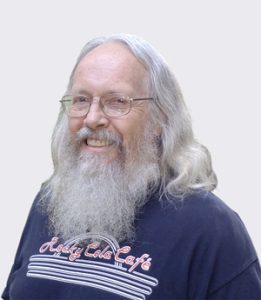An Automobile Trip Through CV in 1911
Automobiles were already becoming popular by 1911, so much so that the newspapers were printing suggested automobile day trips. The auto industry was in its infancy at that point, and there were a was variety of brands, designs and engines available to those well off enough to afford a car. Cars were running anywhere from several hundred to a couple of thousand dollars, which seems cheap until you realize that average yearly income in the U.S. was $575.
One of the cheapest cars was the 14HP Sears Motorbuggy selling for only $325. While there were cars we recognize, the Ford Model-T and Chevrolet for example, there were many brand names that are long gone – Locomobile, Simplex and Izzer. Besides gas engines there were electric cars (Waverly with a range of 90 miles), and a steam-powered car (Stanley) that took a half-hour to start. Car designs too were varied. The International Harvester looked like a powered farm-wagon with big, wooden wagon wheels, and the Reeves Octoauto had eight wheels.
In June 1911 the Los Angeles Herald suggested a beautiful 44-mile loop from Los Angeles going through La Crescenta, Tujunga and back through Burbank and Glendale. The article extolled the fact that many of the roads had just been graveled and a wonderful full-day outing could be had.
Leaving Los Angeles, San Fernando Road would take you to Tropico (which today would be southern Glendale/Atwater Village). Next turn north on Central through Glendale, picking up Verdugo Road. Passing by the Verdugo Tavern (about where the college is), you came to Verdugo Park. Verdugo Park was quite the tourist destination back then, and there were daily railroad excursions to the park. The newspaper described it: “Inside this park is a mountain stream of surpassing proportions, and fern beds and sycamores as pretty and inviting as anything found in a tedious trip to the high mountains.”

president of the Historical Society
of the Crescenta Valley and loves local history. Reach him at
lawlerdad@yahoo.com.
From there you were directed up through Verdugo Canyon on Verdugo Road (Cañada Boulevard didn’t exist yet). Once you reached the Sparr lemon orchard (Sparr Heights today) the road got rough and broken. But turning left at the top of the orchard put you back on a good road, Honolulu Avenue. (Montrose had not been laid out yet, and a 1911 photo shows nothing but sagebrush where Honolulu is today. There seems to have been a road about where Broadview is today, and that must have been Honolulu in 1911.) The driver was instructed to follow Honolulu all the way through the valley as Michigan Avenue (today’s Foothill Boulevard) was too “stony.” (I can’t imagine Honolulu would have been a “good road.” It would have been cut across by several gullies, and there were no bridges.) The uphill approach to Glorietta Heights (today’s Tujunga) would have been along what is today Tujunga Canyon Boulevard, but the driver was assured that there were no grades more than 3% (early cars were underpowered).
After cresting the hill at Glorietta Heights, it was a downhill run through Monte Vista Valley (Sunland/Tujunga). “The worst roads used to exist from the divide down to Sunland, but this week witnessed the completion of a wide graveled boulevard [Foothill Boulevard through Tujunga].” “The State’s oak reservation in Sunland [Sunland Park?]” was the halfway point on the day’s journey, a stopping point. “At this delightful mountain village excellent hotels are now opened, while scores of auto parties find the making of lunch under the big oak trees a most enjoyable outing.”
After lunch it was downhill all the way to L.A. Follow Sunland Boulevard past Orange Cove (Shadow Hills) to Roscoe Station (Sun Valley). San Fernando Road was a straight shot back Los Angeles, paralleling the Southern Pacific train tracks, through Burbank and Tropico.
“It is a trip that will never be forgotten and will rank in the lead for Sunday spins in the future – the Glendale, Glorietta and Sunland auto roads. Nature’s loop the loop around the green Verdugo Hills, the laughing waters of the Verdugo Pass and Big Tujunga Creek, to the State’s oak park at Sunland.”
